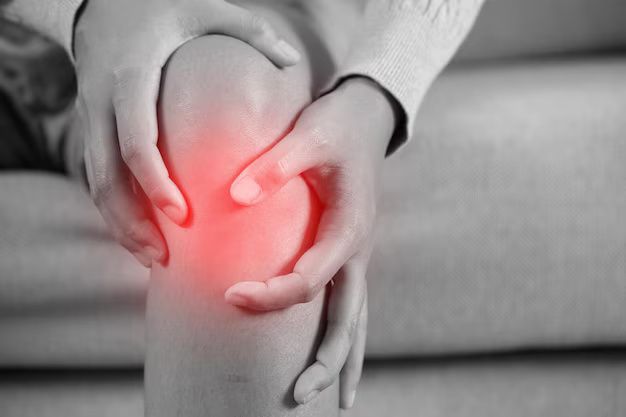Knee Pain Treatment Explained: A Beginner’s Guide to Relief and Recovery
Knee pain is a common health concern that affects people of all ages and lifestyles. Whether it’s caused by an injury, age-related wear and tear, or underlying health conditions, knee discomfort can significantly interfere with daily life. From professional athletes to office workers, many individuals struggle with pain during walking, bending, or even resting.
Knees are complex joints made up of bones, cartilage, ligaments, and tendons. They support the body's weight and allow for mobility and flexibility. When any part of the knee structure is damaged or inflamed, pain can occur. Treatment varies depending on the cause ranging from home remedies to surgical intervention.

Why Knee Pain Treatment Is Important
Knee pain isn’t just a minor inconvenience it can lead to long-term mobility issues if left untreated. It affects millions globally and can disrupt work, exercise, and simple activities like climbing stairs. Some key reasons why addressing knee pain matters:
-
Aging Population: Older adults are more prone to osteoarthritis, a common cause of chronic knee pain.
-
Sports Injuries: Athletes and active individuals are at risk of ligament tears and cartilage damage.
-
Workplace Strain: Repetitive motion or prolonged standing can strain the knee joint.
-
Obesity and Sedentary Lifestyle: Excess body weight increases stress on the knees.
Chronic pain can also lead to secondary issues like reduced physical activity, weight gain, or emotional stress. Timely treatment helps maintain joint health, improve quality of life, and avoid costly procedures down the line.
Recent Updates in Knee Pain Management
Knee pain treatment has evolved with advances in both medical research and technology. Here are some notable trends and changes:
-
Regenerative Therapies: In 2024, platelet-rich plasma (PRP) injections and stem cell therapies continued gaining popularity as non-invasive options to promote healing in injured tissue.
-
Wearable Tech: Smart knee braces and motion-tracking apps have been developed to help monitor recovery and improve physical therapy outcomes.
-
Minimally Invasive Surgery: Techniques like arthroscopy have become more refined, reducing recovery time and scarring.
-
Updated Guidelines: In late 2023, the American College of Rheumatology released new recommendations for managing knee osteoarthritis, emphasizing personalized care plans.
-
Digital Physical Therapy: Telehealth-based rehabilitation programs increased, allowing patients to access guided exercises from home.
These developments aim to make treatment more accessible, precise, and patient-friendly.
Regulations, Policies, and Health Coverage
The way knee pain is treated and covered often depends on healthcare systems and regulations. Here’s how policies impact care:
-
Health Insurance Coverage: In many countries including the U.S., UK, Canada, and Australia, knee treatments like physical therapy, MRI scans, or surgery may be partially or fully covered by health insurance or public healthcare (e.g., Medicare).
-
Workplace Injury Laws: Many governments require employers to cover costs related to occupational knee injuries through worker’s compensation programs.
-
Rehabilitation Standards: Public health bodies such as the CDC (U.S.) or NHS (UK) provide guidelines for rehabilitation to standardize recovery after knee procedures.
-
Prescription Monitoring: Regulations on pain management medications, especially opioids, have become stricter to reduce dependency and misuse.
It’s important for patients to consult with healthcare providers and insurers to understand what treatments are covered and what procedures require referrals or pre-approval.
Useful Tools and Resources for Knee Pain Recovery
Managing knee pain doesn’t end at the doctor’s office. These tools and resources can assist in diagnosis, monitoring, and rehabilitation:
Mobile Apps and Tools
-
Knee Pain Tracker – Helps monitor pain levels, swelling, and recovery progress.
-
PhysiApp – Offers guided physical therapy routines designed by healthcare providers.
-
MyMobility by Zimmer Biomet – An app to support post-surgery recovery via Apple Watch integration.
Online Calculators and Guides
-
Body Mass Index (BMI) Calculator – Identifies weight-related knee strain risks.
-
Pain Assessment Tools – Used to communicate pain severity in clinical settings.
-
Range of Motion (ROM) Charts – Track progress during rehabilitation.
Educational Websites
-
Arthritis Foundation (arthritis.org) – Offers detailed information on osteoarthritis treatment.
-
NHS Inform – Provides knee pain self-care advice and physiotherapy videos.
-
Mayo Clinic – Features expert articles on knee conditions and treatment options.
Wearable Devices
| Device | Purpose | Benefits |
|---|---|---|
| Smart Knee Brace | Supports joint and tracks motion | Aids in recovery and reduces strain |
| TENS Unit | Relieves pain via nerve pulses | Drug-free pain management |
Frequently Asked Questions (FAQs)
1. What causes knee pain most commonly?
The most common causes include osteoarthritis, ligament injuries (like ACL tears), meniscus tears, bursitis, and tendonitis. Age, overuse, trauma, and weight also play major roles.
2. When should I see a doctor for knee pain?
If the pain lasts more than a few days, restricts movement, or is accompanied by swelling, locking, or instability, it’s best to consult a medical professional.
3. Is surgery always necessary for knee problems?
No, many knee issues can be managed with non-surgical treatments such as physical therapy, rest, medication, or injections. Surgery is typically considered when conservative options fail.
4. Can exercise help reduce knee pain?
Yes. Low-impact exercises like swimming, cycling, and stretching can strengthen muscles around the knee, improve flexibility, and reduce stress on the joint.
5. Are home remedies effective for knee pain?
Some home treatments like cold/hot compresses, rest, and over-the-counter anti-inflammatory medications (e.g., ibuprofen) can help manage mild knee pain. However, chronic or severe pain should be professionally evaluated.
Conclusion: Relief and Recovery Is Possible
Knee pain can impact anyone, but with the right knowledge and approach, relief is achievable. Understanding the causes, treatment options, and support tools empowers individuals to take charge of their recovery. Whether it’s managing arthritis, healing after a sports injury, or preventing future strain, timely care and informed choices are key to restoring mobility and improving quality of life.
Always consult a healthcare professional before starting any treatment plan, and explore both traditional and digital resources to aid your journey toward pain-free movement.
